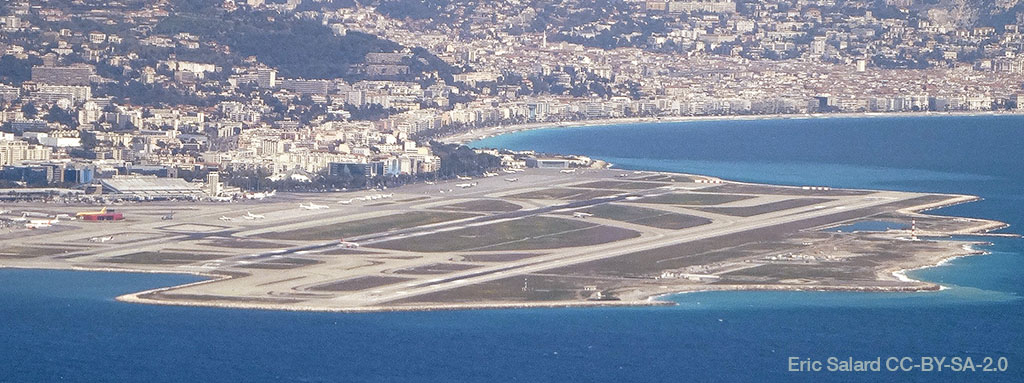One of the really nice things about obstacle limitation surfaces (OLSs) is that their definition is intrinsic to the concept formed by those three words joined together. But they could also be defined as imaginary surfaces that are linked to airport manoeuvring areas, more specifically to runways, and which protect the initial and final manoeuvres of aircraft from any relatively high object.
In recent years a high proportion of Aviation Easements have been updated, and those that remain to be updated already have proposals prepared that are perfectly in line with the OLSs…
On the other hand, there are also aviation easements (AEs). These are the older cousins of OLSs, with some being quite a few years older than the author of this article. Aviation easements can be of three types: operation, radio or airfield easements. Airfield easements are the ones that try to protect something similar to OLSs, while radio easements are in charge of protecting the signal, ensuring it is free of any radio aid interferences, and operation easements are in charge of covering the initial and final parts of the arrival and departure routes.
So what is the difference between OLSs and airfield AEs? Why are some easements senior citizens while OLSs are up to date?
The main difference is that AEs are part of the law. Each airport has a Royal Decree (or Decree-Law) where they are defined from year to year, whether that was 20 years ago or 2 months ago. Thus, they remain unyielding over time, waiting their turn to be updated. And because wheels of bureaucracy grind slowly, these updates can be extended in time indefinitely. OLSs on the other hand are surfaces that protect the current operation, taking into account the definition of the European regulations currently in force and adjusting to the airport’s mode of operation in the present day.
Airports are a kind of ecosystem, capable of adapting to changes depending on their environment, supply and economy. Airports are infrastructures that always undergo major transformation throughout their useful life, not only in terms of their architecture, but also in terms of the procedures, the way of operating, the suppliers, the airspace surrounding them, etc. And OLSs can change alongside them.
So what is the difference between AEs and OLSs?
Simply, AEs, being a part of the law, cannot be violated by any element, or at least they require express approval from Spain’s State Aviation Safety Agency (AESA – Agencia Estatal de Seguridad Aérea), or in some cases they require the object in question to be painted/illuminated. Normally, new constructions need these permits to materialise, and some will still have height restrictions.
Thus, AESA has the limiting/punitive power over the obstacles that can violate, while the airport is responsible for monitoring and reporting if any new element not approved by AESA appears.
Likewise, AENA has an agreement with AESA on the updating of obstacle studies, through which OLSs are analysed every five years. That is, every five years the elements mapped topographically expire and it is necessary to map them again, densify them and evaluate possible violations. This is very useful, since airports never stop changing, and neither do the regulations in force. For example, if we compare a study of obstacles from 2015 with one from 2010, the only overlap is likely to be the actual name of the OLS.
It is the airport’s job to have the obstacle study updated during this 5-year period, as well as to control the obstacles that violate the OLSs.
The problem lies in areas where OLSs do not coincide with AEs, or only coincide in their projection, but not in their height or slope. This causes situations like the following: AESA approves a new construction that does not violate an operation AE that is located at a great height; however, at that same point there may be an OLS at a much lower height that does present a violation for that construction that has already been approved.
So what is done in these situations?
As the law is not violated, the owner cannot be forced to eliminate the construction: he/she can be warned, asked, begged, but if this does not work, the only alternative is for the airport to manage the risks and act accordingly. For example, they could reduce the available take-off route. However, this would directly affect the operation of the aircraft and their payload, and cause dissatisfaction among the airlines. Another option would be for ENAIRE to increase the operating minima on its departure charts in order to safeguard operational safety. Indeed, the solutions can be very varied.
The AE of Malaga-Costa del Sol airport are defined in RD 1842/2009, and although they are not very old and quite up to date, differences already exist between them and current OLSs from 2015. However, this seems almost trivial when we compare it to the AEs of Lanzarote airport, which date back to 1976, or those of Vigo airport from 1986. In the case of Vigo and the Galician airports, it is a much more critical issue due to the natural environment the airports are located in, mostly surrounded by eucalyptus that are over 30 metres high, located right next to the perimeter fence, and have a growth rate of 1.5 m / year.
In short, this small world is like an open circle that does not stop turning: the AEs follow the OLSs, striving to match them, but by the time this has been achieved the OLSs have already changed again, even if only minimally. But let’s not be alarmist. In recent years a high proportion of AEs have been updated, and those that remain to be updated already have proposals prepared that are perfectly in line with the OLSs, thus safeguarding operational safety and maintaining air transport as the safest transport in the world.



